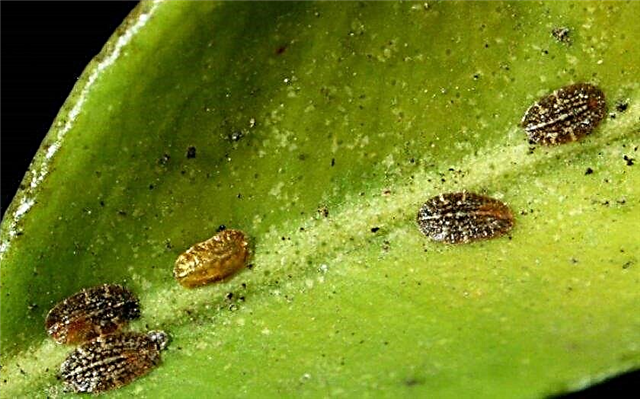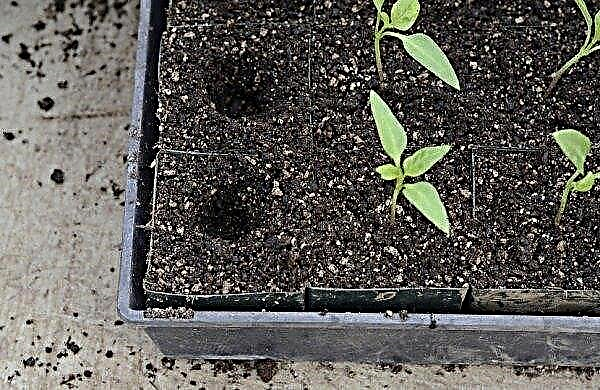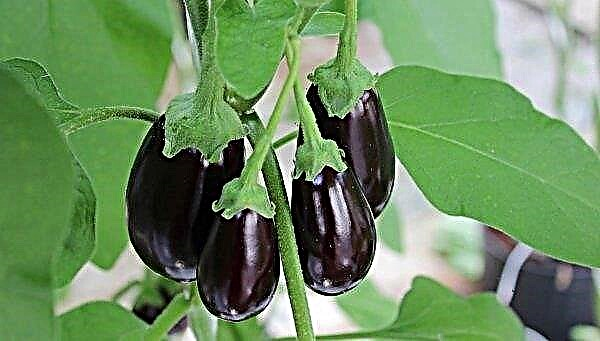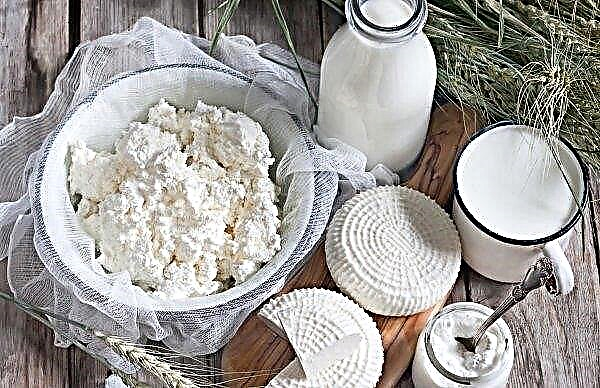The violet variety Windrose has both positive and negative reviews of gardeners. This plant, with proper care, may have a beautiful appearance, but its moodiness often repels lovers of violets - varietal characters are difficult to maintain. Learn more about it to make your choice.
Botanical description of the plant
These violets with beautiful ruffled flowers were bred by Russian breeder Elena Lebetskaya. The flowers have a rather large diameter - up to 5 cm, while they form a lush inflorescence in the form of a hat, in shape resembling a blossomed rose bud. Each flower shows different overflows of pink color, which, in combination with the ends of the petals (wavy, corrugated, even), gives the inflorescence a fantastic appearance.
Flowering Wind Roses can last throughout spring and summer - it depends on the care. The leaves of this violet are also special - they are large and wavy from the base of the leaf plate to its edge and have a dark green color. Wind rose has a tendency to lose varietal signs of flowers.
Did you know? The famous German poet Johann Goethe was a great lover of violets. During his walks, he scattered the seeds of this plant in the vicinity of Weimar. Near this city you can still see fields of violets, which locals call "Goethe's violets."
In the case of leaf propagation, which is traditional for violets, this kind of flower can give monophonic flowers - pink, red, raspberry. The wrong violet is called "sporting", even leaves can be straight. But not all flower lovers throw such plants out, as some “sports” will not yield in their beauty to classic specimens.
House growing conditions
To maintain this species, it is necessary to carefully adhere to all growing conditions, as the plant clearly responds to changes in environmental factors. Temperature, humidity and lighting are serious.
Lighting
Like most indoor plants, this type of violets does not accept direct sunlight. The light muffled by the curtains, even on the southern windowsill, will suit the Rose of the Winds. With a short daylight, the plant needs to provide artificial lighting. Daylight hours for this violet should last up to 14 hours.
Temperature mode
The normal temperature for the bush is +20 ... + 25 ° C. This mode allows the plant to develop normally. In summer, you need to ensure that the temperature does not rise above + 28 ° C. In winter, temperature drops should not be allowed to fall below + 14 ° С. Excessive heat and abnormal colds are equally fatal to delicate violets.
Air humidity
The plant accepts average humidity. It is important not to overmoisten the atmosphere around the pot - spots or rot may appear on the leaves. In dry, hot weather, you can moisten the air around the bush. In this case, it is worthwhile to ensure that the drops do not fall on the leaves. In winter, especially with the proximity of heating appliances, an air humidifier can be installed near the plant.
Care Tips
This delicate plant is very demanding on growing conditions. Especially carefully you need to observe the conditions of irrigation and monitor the moisture of the soil.
Watering
You need to water the plant under the root, while the liquid is evenly distributed on the surface of the soil.
Important! When watering, liquid is not allowed on delicate leaves and violet flowers, so you need to use a watering can with a narrow nose.
The following water sources are used:
- spring;
- thawed;
- well-maintained water supply.
Before using any type of water, it needs to be filtered, and the tap water should also be defended for 1-2 days. Watering is carried out with room temperature water - +23 ... + 25 ° С. In the summer, watering is carried out as the topsoil dries up 2-3 times a week. In winter, you can limit yourself to one watering per week. For violets, an interesting method of watering is often used - wick. In this case, the plant independently determines how much water it needs for life. This is done as follows: a wick is made from a rope with a diameter of up to 0.2 cm, one of its edges is placed in the ground, and the other is released through drainage holes into a water tray. Thus, the violet will gradually absorb moisture.
For violets, an interesting method of watering is often used - wick. In this case, the plant independently determines how much water it needs for life. This is done as follows: a wick is made from a rope with a diameter of up to 0.2 cm, one of its edges is placed in the ground, and the other is released through drainage holes into a water tray. Thus, the violet will gradually absorb moisture.
Fertilizer application
You can fertilize this flower with the usual mineral fertilizing for flowering plants. On sale you can find specialized fertilizers for indoor violets.
The feeding mode is as follows:
- in the spring - every 14 days;
- in the summer - every 10-14 days;
- in the fall - every 30 days;
- in winter - top dressing is not carried out.

Pruning
Pruning the Rose of the winds is not required, it is enough just to remove perishable leaves in time. Children are also subject to removal - for full flowering in the pot there should be only one rosette of the plant. Most often, children appear with excessive feeding or too large a pot with a large amount of soil.
Did you know? Before the Islamic Revolution of 1979 in Iran, the Kurdistan wine, popular at that time, was made in Iran, the production technology of which included the addition of violets.
Transfer
The schedule for a planned transplant of this type of violet depends on the age of the bush. A young plant (1-2 years) is transplanted twice a year - in autumn and spring. An adult flower must be transplanted once a year - in the spring. Urgent transplants can also be made if the roots rot or a white coating appears on the soil surface.
The transplant is performed according to the usual scheme for indoor flowers:
- A larger pot is selected.
- Expanded clay is laid out at the bottom.
- From above lies part of the soil substrate for violets.
- A flower is placed in the pot.
- The remains of the soil mixture are refilled.
- Neatly compacted earth around the bush.
- Watering is in progress.
Important! Before planting violets in a new pot, you need to carefully examine its root system and remove all rotted roots.
How to propagate at home
To preserve varietal traits, reproduction is best done by separating the branch outlets.
This is usually done when transplanting plants in spring or autumn:
- The blade separates the daughter outlet.
- A sprout is planted in a peat briquette.
- A month later, when the bush is well rooted, it is transplanted into a pot.
 Another way is leaf propagation, traditional for violets. As mentioned above, for the Wind Rose, this method is undesirable, as this often leads to a loss in the quality of the flowers. If the florist still decided to propagate the violet using this method, you need to choose the strongest leaves from the second tier above the soil - they are cut with a blade at an angle of 45 ° and placed in peat, a soft non-acidic substrate or simply in standing water. After 30–45 days, the plant will be ready for planting in a pot.
Another way is leaf propagation, traditional for violets. As mentioned above, for the Wind Rose, this method is undesirable, as this often leads to a loss in the quality of the flowers. If the florist still decided to propagate the violet using this method, you need to choose the strongest leaves from the second tier above the soil - they are cut with a blade at an angle of 45 ° and placed in peat, a soft non-acidic substrate or simply in standing water. After 30–45 days, the plant will be ready for planting in a pot.Possible growing problems
With poor quality care, Windrose may fall ill or be attacked by pests.
She is susceptible to such diseases:
- Powdery Mildew Pale spots in the form of plaque on foliage. The diseased plant is treated with fungicide ("Fundazole") - leaves and stems are sprayed. For prevention, a solution of the drug in water can be used once for irrigation.
- Gray rot. Gray and dark gray spots on the leaves. The method of treatment is the same as with powdery mildew.
- Rust. The spots are red, brown and brown on the foliage. Copper sulfate is diluted in boiled water in a small concentration, the leaves are sprayed or moistened with a tissue swab.
- Late blight. Decay of the root system, gray and brown spots on the leaves, weakness, wilting. The plant is treated with fungicide, but in most cases it does not survive.
The main pests affecting the flower are as follows:
- Spider mites. These insects manifest themselves as small cobwebs that appear on the leaves.

- Cyclamen mites. The leaves of an adult plant become excessively curly and furry.

- Thrips. Dots, spots, deformations, wilting zones appear on the flower petals, the roots begin to decay, and small yellow spots form on the leaves.

- Scaffolds. Leaves become slippery, sticky, darken.

The methods of controlling all pests are the same - washing the leaves with soapy water and treating with an insecticide (Actellic or the like). Preventive treatments can be carried out every six months. With proper care, the violet Wind Rose looks very impressive. This plant is able to decorate any room and bring real aesthetic pleasure. However, for this you need to be a real fan of floriculture and devote a lot of time and effort to the flower.
















